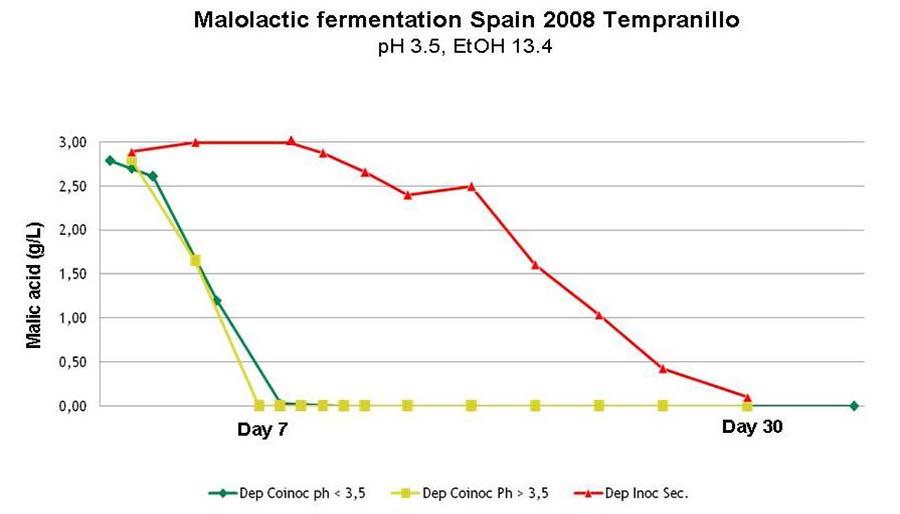Time is money, also true in winemaking
The primary cluster of benefits from improving the speed of malolactic fermentation are financial and managerial:
-
wines are ready earlier and stabilized earlier
-
the winery saves energy per tank, lowering the cost of heating and/or cooling
-
winery managers can better plan how to use their fermentation capacities, storage tanks and barrels
-
staff can be used for higher-value operations than monitoring MLF for weeks and sometimes months, saving analytic costs.
An example of this is given in the diagram below for a 2008 Spanish Tempranillo.
Alcoholic fermentation was nearly finished when the VINIFLORA® malolactic bacteria were inoculated into the must for the two co-inoculation modalities (green and yellow in the graph). The red curve corresponds to a wine that went through spontaneous fermentation with wild bacteria that were moved from a tank in fermentation and inoculated as a control (cross-seeding with wild unidentified flora).

